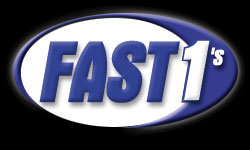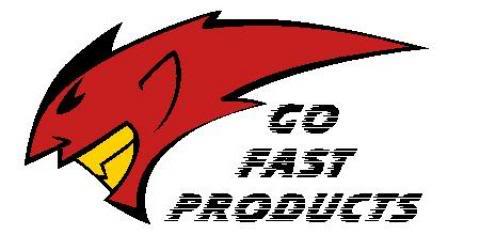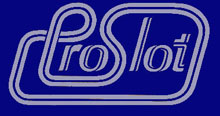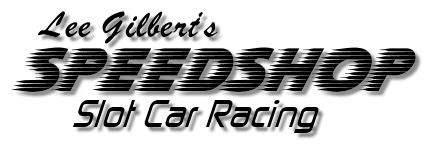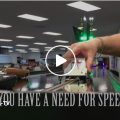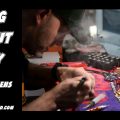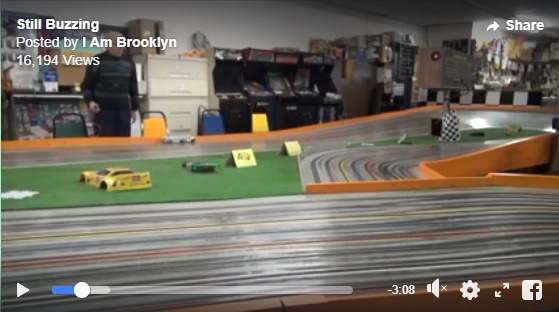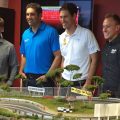Old Weird Herald’s
Guide to Motor Services
– compiled by Paul Kassens
![]()
Introduction:
Has your motor lost it’s zip? Tired of being pulled three feet down the main chute? Wouldn’t you just love to have a tad more horsepower?
Well, fellow frustrated velocity seekers, it just could be time to send your sleepy mill in for some much needed “reconditioning”.
Just what exactly is “reconditioning”, you might ask, and what exactly can it do for my tired power plant?
Motor Services
Reconditioning consists of a few basic procedures that will restore your motor to new, or often even better then new, condition.How do you tell when your motor is due for reconditioning? Here’s a list of some signs and tips for what to look for:If your motor slows suddenly, or smells funny, stop it immediately. In some cases it may already be too late, but often it can be saved. This could be a sign that your armature has gotten too hot, and the commutator becomes distorted. Check the commutator for discoloration, arcing, or “trenching”.
It also could be caused by the brushes “hanging up”, or the brush springs getting too hot and losing their temper. This doesn’t mean their angry… it just means the metal isn’t as springy any more. In any of these cases, the motor is due for a rebuild.
If your motor has raced in several races, or you can’t even remember how long it’s been since you last rebuilt it… it’s probably due for a rebuild. Check it for dirt & grime, brush wear, and commutator wear. The lifespan varies a lot for different types of motors and different racing conditions.
“Glue” racing takes its toll on your fragile little torque monster. It’s a tremendous strain on a motor to try to pull out of a quicksand-like puddle of glop at such tremendous speeds. In high-powered group 7 racing with glue, you’re lucky if you get a few heats out of a motor before it goes south. Group 27’s can run a whole race, depending on conditions. Group 12’s and 15’s can last a few races, depending on the track, power, and glue conditions. Racing 16D’s on a glued-up track is risky, or even stupid, in my opinion.
“Spray-glue” racing is much easier on motors, as the motor is not being forced to accelerate out of such drastic bogs. Eurosport motors can last for a few races, but should be checked, if not rebuilt for each race. Group cars can last several races in spray glue conditions.
“No-glue” racing is by far the easiest on motor life. You have to actually remember to check over your motors routinely, as it may be easy to neglect your poor over-worked motor, and leave it in too long. I have 1/32nd scale cars that I race on club tracks, and they last an entire race season. Some of the more anal racers even keep notes to keep track of their motors performance and maintenance schedules. Check mainly for sludge and wear. You can even use a “spray bomb” electronics cleaning spray, or lighter fluid to keep them clean. Be careful not to use anything that has an oily base. Dirt and grime are your motor’s mortal enemies.
Cleaning:
All motor services begin with cleaning. Face it, your motor’s usually pretty cruddy by the time you decide to recondition, so obviously the motor services need to have some efficient ways to strip away the grime. They use ultrasonic cleaners, the same as a jeweler uses, to clean your little gems. Special solvents are used as well, to make them all good and clean. The shafts are cleaned to get rid of solder, as this could effect the balancing. When they’re all done, they put on a nice coat of armature dye to prevent rust, and put them in a nice little protective tube.
Armature Rebalancing:
Armatures are balanced using fairly expensive and specialized balancing machines. They are “dynamically” balanced, meaning that they are balanced basically in all directions. A strobe light pinpoints the heavy sides, and they are marked and drilled to remove a small amount of material until they are balanced. Theories vary greatly on how crucial the need is for balancing. Many say that armatures experience a “shift” when they are new, and require a rebalance after breaking them in the first time. The need for armature balance also varies proportionately with the speed of racing you’re doing. Obviously, the more RPM’s you motor’s expected to do, the more effect balance has on it. On a short track, you may not ever be able to detect any difference in performance due to armature balance. On a King track, many racers wouldn’t dare consider not running a freshly balanced arm.
Commutator Retruing:
Commutator truing is more widely considered essential, can greatly improve the performance of your motor, and actually can increase an armature’s lifespan. This is done on extremely precision jeweler quality lathes, using diamond bit cutting tools. Even though there is a limit to how many times a commutator can be cut before it runs out of material, it is much worse if you run it until your brushes wear a “trench” in it. Exactly how many recuts can be done can vary as well, depending on how out of round, worn, or trenched it is when you get it retrued. Lifespan is also effected by how deep a cut the service makes, but believe me, all the services listed here take much pride in their ability to take the smallest cut possible.
Engraving:
Several motor services offer engraving. This is handy to label the wire size – & number of turns (ie: 38t-26) on your armatures, or to put your initials or other identifying marks on them. Just don’t expect them to fit your drivers license number, social security number, the 23rd Psalm, or your favorite Pearl Jam lyrics on your favorite little precious toy car armature! OK?
Stack Grinding:
Some of the services offer “stack grinding”. This involves turning down the armature stack on a precision lathe to a specified smaller diameter. Sometimes this is done to achieve a larger air gap between the arm and the magnets, resulting in more top end, or different power curve. Sometimes it is to merely use an armature in a set-up made with a narrower air gap. It is also done to true the stack, similar to the comm. cutting, as it is possible for the stack to become out of round as well. Have a look at the individual company info for more on this.
Remagnetizing:
Several of the services will “ZAP” your magnets for you. This is done with a magnetizer, which is a very heavy box full of wire spooled around an iron core, with heads ground to match your magnets curvature. They are usually wired to humungous capacitors that store up the electricity, and then discharge with a huge “ZAP!” sound… hence the name. Gauss Meters are used to measure and match the strength of the magnets. Magnet “zapping”, or remagnetizing, again is a very subjective area. Basically, the stronger your magnets, the more acceleration and brakes your motor will have. It’s also true that stronger magnets result in less “top end”, or straight-away speed. This, of course, is affected, and can be tuned, by a whole slug of other factors; such as: air gap, brush tension, armature wind, gear ratio, tire size, body aerodynamics, glue conditions, sun spots, alien autopsy results, government conspiracies, fad-of-the-week, etc…
Honing:
“Honing” is done with diamond coated tools that come in a variety of sizes. This accomplishes a couple of things. First of all, it enlarges the “air gap”, or space between your armature and magnets, to a desired amount. If your armature is .513″ diameter, and your magnets are honed to .525″, then you’ve got a .012″ “air gap” (or .006″ per side). More gap generally results in more top end and less punch & brakes, and vice versa. Theories vary greatly on what the optimum air gap should be for each particular situation; – but this is another way of achieving performance variables, along with all the others mentioned. Second, honing assures that your armature is in the center of the magnetic field. Since the hone’s shaft goes through the bearings, it’s going to guarantee that your little hummer isn’t off-center & scraping on one magnet. Since these hones are diamond coated and precision made, you can buy them – but they ain’t cheap, so unless you’re building a lot of motors it makes since to let the pro’s do it for you. Several of the listed vendors offer honing among their services.
“Blueprinting”
“Blueprinting” is a term that’s been coined and widely used to basically describe setting up the motor properly. The steps involved in “blueprinting” may vary somewhat by vendor. For the most part, it involves setting up the motor with the proper brush springs, tension, magnet gap, brush hood alignment, bearing alignment, and armature spacing. Some may include reconditioning services and/or magnet zapping as part of their blueprinting. I have included some references briefly to blueprinted motors in the vendor listings, as it is usually offered as a new over-the-counter product, rather then as a service. I consider rebuilding of used motors as a “custom” motor building service, and separate from “blueprinting” new motors.
Custom Motor Rebuilding:
Many of the motor services offer various custom motor building or rebuilding services. This is basically fairly self explanatory, but actually varies a lot between companies. The smaller companies, in general, tend to offer more specialized custom services due to the tremendous time factor involved in motor building. Since this varies, I’ll let you read about what custom services are offered from each individual company’s info in their respective sections.
Recommendations:
Hey, I’ve got my journalist hat on, and am just here to let you know what’s available, not recommend one over the other! And besides, none of them have ever even tried to bribe me to say otherwise! 😉 Seriously, though, I’ve been racing slot cars for over 50 years (ugh, I’m old!), and these motor services are comprised of some of the top experts in the history of the sport, and most have been around every since I can remember (no…not last week!).
The quality of workmanship and service is first rate, or they wouldn’t have stayed in business so long. The services, procedures, and prices are well established, and are pretty consistent from one vendor to another. Most racers choose based on loyalty towards a particular company’s products or people. Others choose strictly based on who’s closest to them. If you hear any recommendations otherwise, it’s most likely just a reflection of the loyalty factor. They all do a fine job. You decide!
Following is a list of slot car motor services providers, in alphabetical order:
![]()
Motor Services Vendors List:
![]()
DISCLAIMER:
The following listing of slot car motor service providers – was compiled using information obtained from their web sites. Please note that I can not update this information as frequently as the service providers, so always check on their web site, or contact the vendors, for the most current and up to date information.
![]()
Editor’s Note: In compiling the information for this article, I have strived to obtain information from all slot car motor service vendors available. If there are are more out there who are not included, they have either not responded, or I’m not aware of them, and by no means intentionally neglected them!
Vendors:
If there is another service that would like to be included in this guide, or if your information needs updating… please email me, and I will add or update the information.
email: paulk@oldweirdherald.com
updated: 11/26/2018










